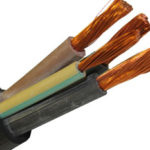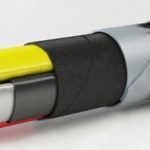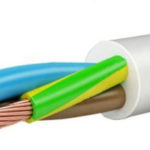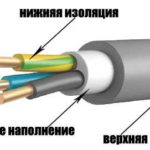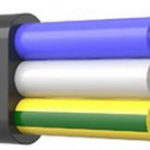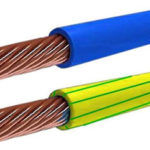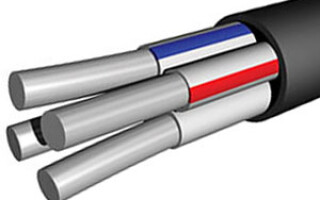AVVG is a flexible conductor, the basis of which are aluminum conductors. Insulation of the cores provides polyvinylchloride material. The entire group is placed in a PVC sheath by the manufacturers.
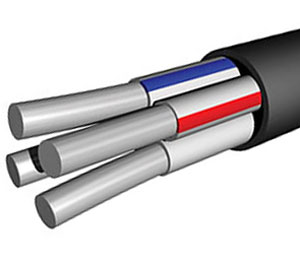
The high level of performance, as well as the low cost of the product made it most suitable for the arrangement of not only production and storage facilities, but also for the residential sector.
AVVG cable has the following decoding:
- A - only aluminum conductors are used;
- B - wire sheath is made of PVC;
- B - PVC outer sheath (standard variant);
- D - there is no protective sheath coating, the cable is bare.
Additional cable marking indicates the following:
- T - the wire can be used in tropical conditions;
- NG - does not support combustion;
- H - laying in the ground at low corrosive activity is allowed;
- OZ - the core consists of a single wire;
- W - cores have a flat arrangement.
Technical characteristics of AVVG cable
The wire is used to transmit electricity at 600 and 1000 V. AC frequency is 50 Hz. Permissible temperature parameters range from -50°C ...+50°C. At the same time, the conductor must not be heated above +70°C. During abnormal situation it is able to withstand +80°С.
When installing in conditions of -15°C and below, it is necessary to preheat the wire. During installation, it is important to observe the correct bends in the turns. For a single-core cable is allowed to bend at an angle of 10 diameters, and multicore cable can be bent at an angle of 7.5 diameters. If all the conditions are met, the AVVG cable will last for 30 years.
Design
ABVG power cable consists of strands made of soft aluminum. Due to this, it has flexible properties. This is convenient for installation. However, failure to follow the rules of installation can make it brittle. The conductors can be sector and round, and consist of one or more wires. In total, the structure of the cable AVVG involves the use of up to 6 wires. All types of cross-sections comply with GOST. In addition, the cores may have different cross-sections, the zero has the smallest.
Insulation also complies with GOST and has a standard marking. Earthing has a green or yellow color, and the zero is marked in blue.
Field of application
AVVG cable has found its application in various areas and operating conditions:
- local power grids;
- enterprises;
- distribution substations;
- residential buildings;
- industrial premises.
The wire has no armor, so its laying implies the absence of compression and mechanical effects. In addition, it is subject to stretching, which can lead to damage to the insulation. This means that it should not be allowed to sag too much.
LSZ tape is used for safe laying in the ground. The conductor itself should be marked "Z". In this case, plastic is used, which fills the space between the cores and makes their arrangement more dense.
Laying is carried out on a sand cushion inside the trench, then everything is backfilled with sand. The layer should be about 20 cm. It is important not to allow the tension of the conductor. It is necessary to lay a signal tape along the entire length, and in places where the load on the ground is expected, the wire should be placed in a metal pipe.
In places where fire safety is given special attention, use cable marked "HG".
For domestic purposes, it is appropriate to use a conductor with conductors from 2.5 to 6 mm². The presence of internal and external insulation allows for external laying without the cable channel. Internal laying is carried out with the help of corrugation.
The cable is suitable for basements, garages and courtyard constructions with exposed wiring. Plastic is unaffected by ultraviolet light, it is not affected by humidity and does not rot. Nevertheless, the conductor is not suitable for the equipment of baths or saunas, as the air temperature exceeds +50 ° C.
Related articles:
